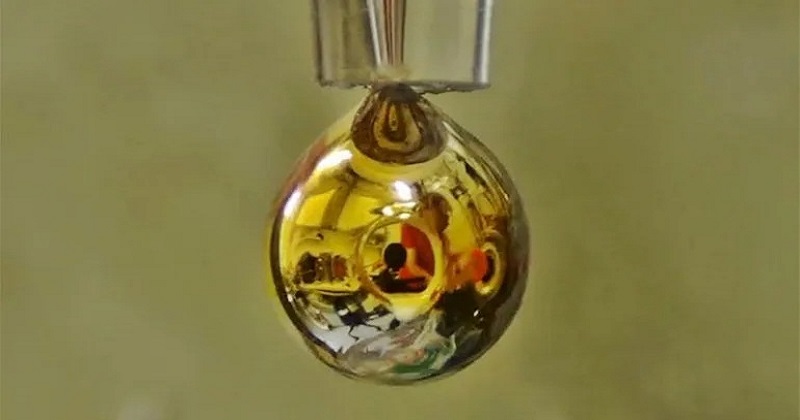
Alchemy has remained a narrative of myths and folklore, where one might transform the characteristics of materials, mainly from metal into gold. Not for long, researchers in Prague achieved the feat when they created a thin film of water over electron-sharing alkali metals. Even though it was just for a few seconds, it was accomplished without the tremendous pressure and temperature normally necessary.
Applying pressure to insulating materials can make them metallic, but converting the property of water needs a pressure of 48 megabar (approximately 4,73,72,316 atmospheres), which is now beyond experimental capabilities.
Such high pressure exists only inside the interior of large planets or stars, where molecules can get so tightly packed that they share their outer electrons and conduct electricity. Neptune or Uranus, according to physicists, host water in such a metallic condition that it becomes a superconductor capable of transmitting electricity.
Researchers at Prague’s Czech Academy of Sciences were able to maintain water in a metallic condition for a few seconds. The experiment did not require the use of high pressure to transform non-metallic materials into metals.
Experiments, according to the study published in the journal Nature, show that water at laboratory pressures will be superionic, a phase of water that exists at extremely high temperatures and pressures when water molecules break apart, with strong proton conductivity but not metallic. However, researchers have demonstrated that a metallic water solution can be produced by significant electron doping.
The researchers built on the work of study co-author Pavel Jungwirth, a physical chemist at the Czech Academy of Sciences, who revealed a comparable phenomenon in ammonia last year. The researchers encountered a problem, according to Nature, because alkali metals react explosively when combined with water. The solution was to create an experimental set-up that would drastically slow down the reaction, preventing it from becoming explosive.
The scientists utilised a combination of salt and potassium that is liquid at room temperature and vacuumed it. A syringe was used to create droplets of the mixture, which were then exposed to tiny quantities of water vapour and condensed onto each droplet to produce a one-tenth of a micrometre thick layer.
Also Read: Video of ‘real-life’ SpongeBob & Patrick Star goes viral
‘Electrons from the droplet then quickly diffused into the water — together with positive metallic ions — and within a few seconds, the water layer turned golden,’ Nature reported.
The findings were verified by a synchrotron, cyclic particle accelerator in Berlin, which proved that the gold reflections produced were metallic water signatures. ‘We were not sure at all that we would find it. It was amazing, like [when] you discover a new element,’ Nature quoted Jungwirth as saying, who considered chemical development to be the pinnacle of his profession.

Post Your Comments